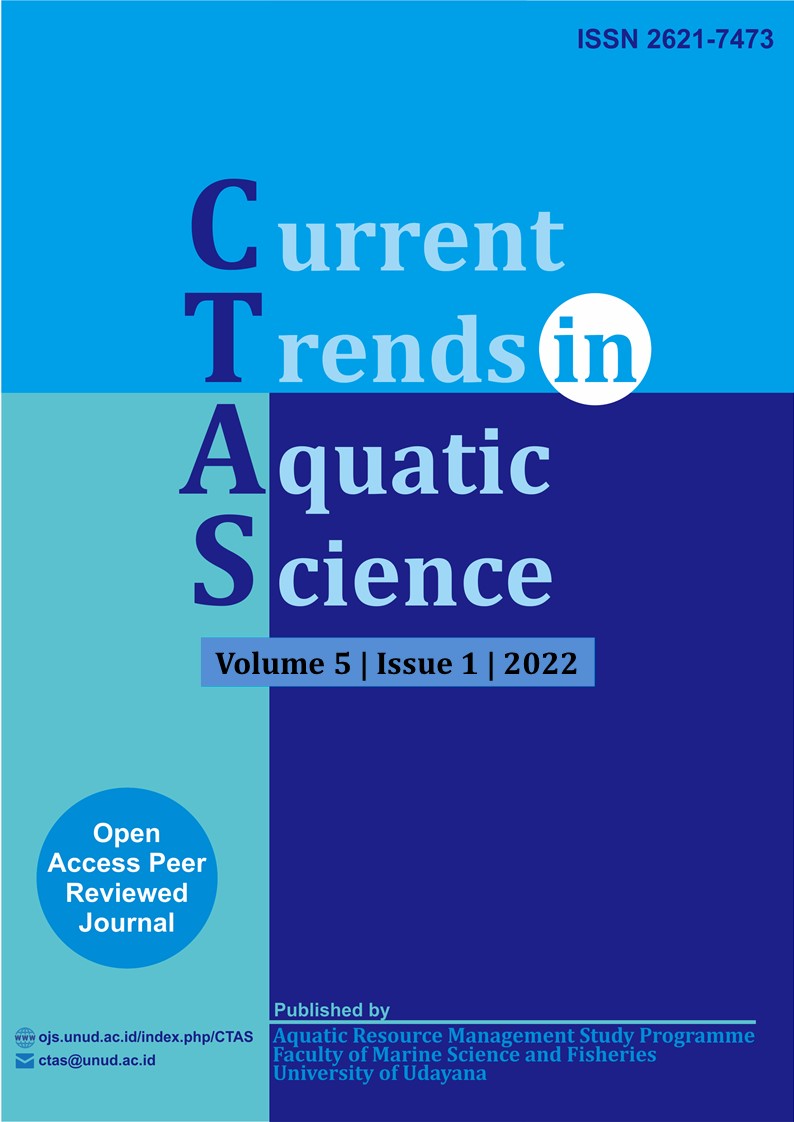Laju Pertumbuhan dan Kelulushidupan Ikan Lele Dumbo (Clarias gariepinus) dengan Padat Tebar Berbeda dalam Sistem Bioflok
Abstract
Biofloc technology is used to overcome the increase in organic matter, improve the quality of aquaculture water, and increase production yields. This study aims to determine the growth rate and survival rate of African catfish with different stocking densities in the biofloc system. This study used a completely randomized design (CRD) with 3 treatments and 5 replications. The test animals used African catfish measuring 7-9 cm with a stocking density of A (15 ind/15L), B (20 ind/15L) and C (25 ind/15L). The results showed that the use of a biofloc system in African catfish culture with different stocking densities resulted in no significant difference in growth rate, survival rate (SR) and feed conversion ratio (FCR). The average weight growth value of African catfish in treatment A, B, and C was 14,13 ± 2,26 g, 13,37±0,46 g, and 12,04±0,48 g, respectively. The average length growth in treatments A, B, and C was 6,27±0,54 cm, 6,09±0,31 cm, and 5,69±0,34 cm, respectively. The survival value (SR) of African catfish in treatment A, B, and C was 85,33±5,58%, 83±2,73%, and 82,40±2,19%, respectively. The value of the feed conversion ratio (FCR) in treatment A, B, and C was 0,72±0,08, 0,75±0,06, and 0,79±0,03, respectively. The range of values for the water quality parameters of the culture media is categorized as suitable for the growth of African catfish, resulting in temperature, DO, and pH value of 27,5-30,8°C, 3,9-5,9 mg/L, pH 6,20-6,45, respectively. The content of ammonia is 0,26-0,44 mg/L, nitrite is 0,08-0,18 mg/L and nitrate is 0,18-0,29 mg/L.


